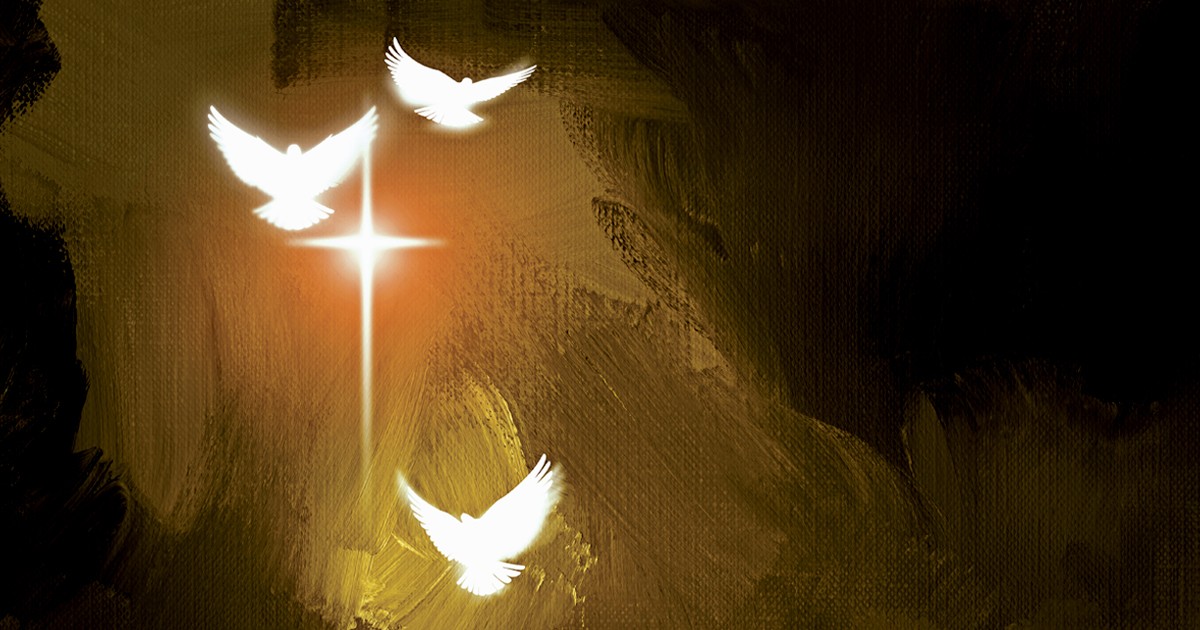Near-death experiences are a fascination for many. Countless books have been written on the topic—from personal accounts to scientific studies attempting to explain the phenomena.
The appeal is understandable. Who among us, having experienced a significant loss in our lives, wouldn’t want to know what life is like beyond the grave?
As Easter people we know that resurrection is coming, and this month we celebrate the Resurrection of Christ—“the firstfruits of those who have fallen asleep” (1 Corinthians 15:20). But today, at a time when sickness has defined the last two years of our collective lives, resurrection may seem far off. We long for life in the face of death and live in the tension of the “already and not yet.”
In the story of Lazarus, which appears in John’s Gospel just before the death and Resurrection of Jesus, we see that tension between pain and promise, and find reassurance that life does, in fact, prevail.
Doubt and Faith
The Gospels record three resurrection miracles in Jesus’ ministry: when Christ raises Jairus’ daughter to life while she is still in bed a few hours after she died (see Mark 5:21-24, 35-43); when Jesus interrupts a funeral to raise a widow’s only son (see Luke 7:11-15); and when Jesus raises Lazarus, a dear friend and brother of Mary and Martha (see John 11:1-44).
Prior to Lazarus’ death, Jesus had been preaching in Perea, about 30 kilometres from Bethany, when he receives the urgent message from the sisters saying that Lazarus, “the one you love is sick” (John 11:3). He could easily have made it to his friend’s bedside with a day and a half’s strident march. Instead, Jesus chooses to delay his return. Why? As Jesus says, “It is for God’s glory so that God’s Son may be glorified through it” (John 11:4).
In the face of heartbreak, that may seem like an unsatisfying answer. When the grieving sisters hear that Jesus is approaching their town, Martha rushes out and says, “Lord, if you had been here, my brother would not have died” (John 11:21). It’s an accusation and an indication that doubt has crept into her mind: if Jesus was who he said he was, why would he abandon them in their time of need?
Yet doubt and faith are not mutually exclusive. Even as Martha rebukes Jesus, she says, “But I know that even now God will give you whatever you ask” (John 11:21). And in his response, Jesus affirms her faith: “I am the resurrection and the life. The one who believes in me will live, even though they die; and whoever lives by believing in me will never die” (John 11:25-26).
These words are a comforting benediction, stated at almost every Christian burial for the past 2,000 years. They remind us that, even in moments of doubt, we can hold on to our faith in an eternal future where we will finally be our “real” selves, fully at home in our Father’s love.
Grief and Joy
After Jesus offers this assurance of eternal life, he is led by the sisters to the tomb where Lazarus has been laid. It’s an emotionally raw atmosphere and the Gospel writer notes that Jesus is “deeply moved in spirit and troubled” (John 11:33). One can imagine the range of feelings that Jesus is experiencing: anger at the catastrophe that death has inflicted across all of the Creator’s handiwork; sorrow at the ravaging result that sin has left in its wake; and compassion for those who are heartbroken in their grief.
Even knowing that he is about to perform a miracle, Jesus openly displays his grief. John 11:35 simply records: “Jesus wept.” These two words help us know that our God is truly with us in our sorrows.
“If Jesus was who he said he was, why would he abandon them in their time of need?”
Tears on his cheeks and voice full of emotion, Jesus offers a brief prayer. The words are enriched with confidence and unshakable assurance. At the end of the day, the mourners will grieve no more. Joy awaits. “ ‘Father, I thank you that you have heard me. I knew that you always hear me, but I said this for the benefit of the people standing here, that they may believe that you sent me.’ When he had said this, Jesus called in a loud voice, ‘Lazarus, come out!’ ” (John 11:41-43).
Lazarus makes his way out of the tomb, his hands and feet wrapped with strips of linen, and a cloth around his face. Jesus says to those gathered, “Take off the grave clothes and let him go” (John 11:44).
You can imagine Martha and Mary hesitating at first, gingerly reaching out to touch their brother, and then embracing him with joy. Soon after, they will hold a dinner in Jesus’ honour (see John 12:2).
Their recent suffering would not immediately be erased; Lazarus’ illness and death would still be fresh in their minds. Nevertheless, it’s a picture of the promise given in Psalm 30:5, that “weeping may stay for the night, but rejoicing comes in the morning.”
Death and Life
Lazarus’ resurrection was an incontrovertible sign to those gathered that Christ had been sent by the Father because only the Author of Life could reunite body and soul. It is noteworthy that John purposefully includes this episode in his Gospel in close proximity to the Passion and Resurrection of Jesus. Having defeated death on more than one occasion, Jesus of Nazareth is undeniably Lord of Life! At the end of his Gospel, John makes his intentions clear: “These are written that you may believe that Jesus is the Messiah, the Son of God, and that by believing you might have life in his name” (John 20:31).
But what of Lazarus? Having faced death in life, Lazarus now experiences life in death. This experience surely would have left its mark—not only on him, but on his wider community.
News of the resurrection of Lazarus is shared far and wide. John 11:45 notes that “many of the Jews who had come to visit Mary, and had seen what Jesus did, believed in him.” On Jesus’ next visit to Bethany, a large crowd of Jews comes to see him, “not only because of him but also to see Lazarus, whom he had raised from the dead” (John 12:9). The religious leaders are unnerved by this wave of popularity, fearing that it might affect an already tenuous political situation, and they make plans to kill Lazarus, as well as Jesus (see John 12:10-11). Once again, death and life are not so easily separated, and Lazarus must live in that tension.
Yet even death threats cannot take away from the beautiful scene recorded in John 12. After enjoying a celebratory meal in his honour, Jesus is relaxing on the couch and Mary comes to him, her heart full of gratitude. She falls before the Master, breaks open a jar of expensive perfume and washes Jesus’ feet with her hair. The fragrance of the perfume fills the whole house (see John 12:3). Her act of exquisite worship reminds us that the day will come when we, too, will kneel before the conqueror of death, the Lord of Life, and worship him.
As we await that day, we continue to live in the tension of the “already and not yet.” But just as the sorrow of Mary and Martha was turned to joy by the resurrection of Lazarus, Jesus assures his disciples that life will prevail and sorrow will be no more, saying, “Now is your time of grief, but I will see you again and you will rejoice, and no one will take away your joy” (John 16:22). This is the triumphant climax to the story—through his Resurrection, Jesus demonstrates his power over the last and most irresistible enemy of humanity: death!
Major Wil Brown-Ratcliffe is the corps officer at Belleville Citadel, Ont.
Photo: Sky Light Pictures/Lightstock.com
This story is from:










Leave a Comment